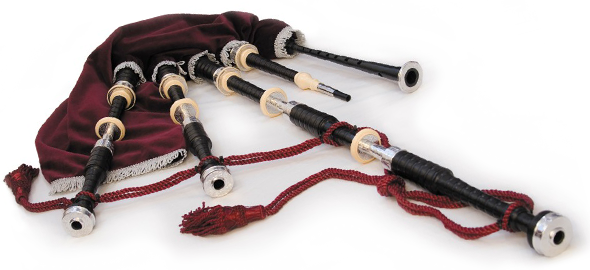Pipe and drum bands have become a popular symbol of Scottish ethnicity, as they are seen as “an extension of the Victorian ideal of the fighting romantic Highlander.” Few would argue that bagpipes are as uniquely Scottish and any other symbol of the nation, and I doubt there is anyone who would envision a bagpiper without seeing that piper in a kilt. Although the Great Highland Bagpipe is the most iconic form of bagpipes, there are variations native to many different cultures.
Historians almost unanimously agree that the bagpipe is not a Scottish invention. In fact, the earliest possible evidence of bagpipes comes from Hittite sculpture dated ca. 1000 BC. The earliest known description comes from the 1st century AD Roman historian Dio Chrysostum who noted that a sovereign (thought to be the Emperor Nero) could play a pipe with his mouth and a bladder tucked under his armpit. Some modern historians even suggest that it was the Romans who first introduced the bagpipe to Scotland.
The first solid reference to Scottish bagpipes is from French history where pipes were used at the Battle of Pinkie Cleugh in 1547. The modern piping tradition evolved from the bagpipe’s martial use with battle tunes, marches, gatherings, salutes and laments. In time, a piper would come to be an important member of any clan chief’s retinue and by the early seventeenth century several piping families had risen to prominence such as the MacCrimmonds, MacArthurs, MacGregors, and the MacKays of Gairloch.
We now have a treat in the Kilted Family because the Kilted Kid began taking bagpipe lessons last month. He is beginning with a practice chanter and it will likely be several months before he graduates up to a full set of bagpipes – but that’s probably for the best anyway. More to come!
